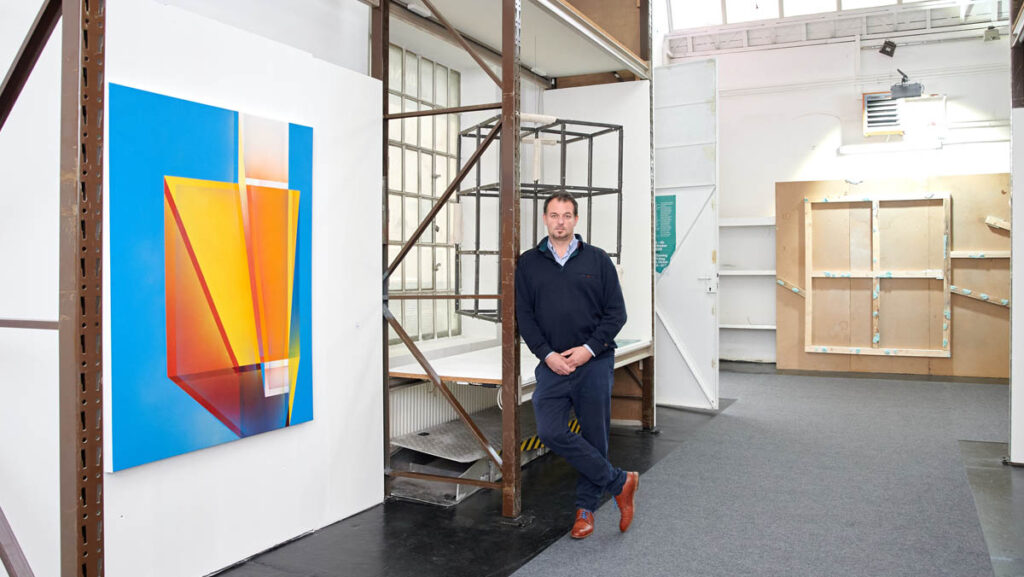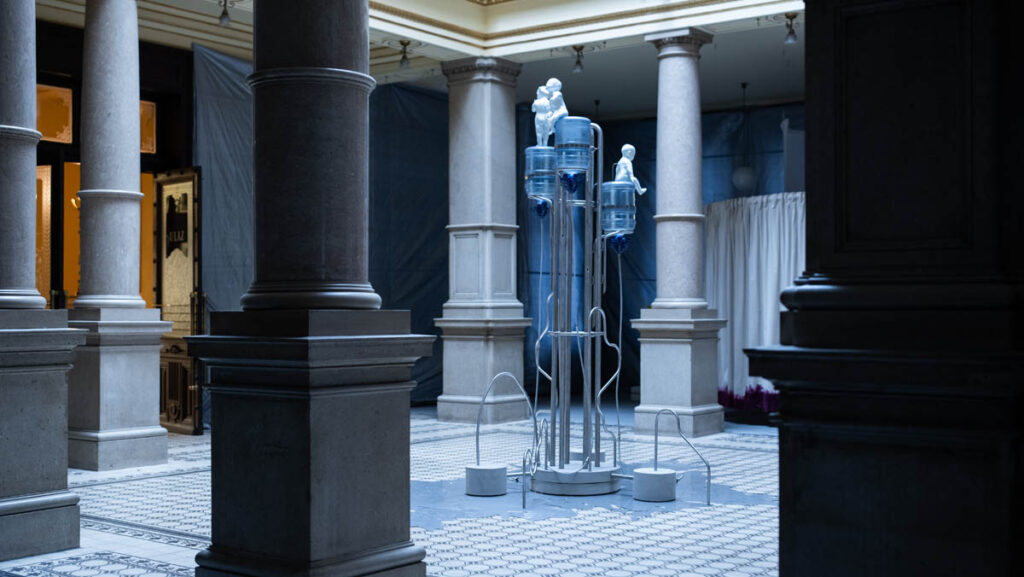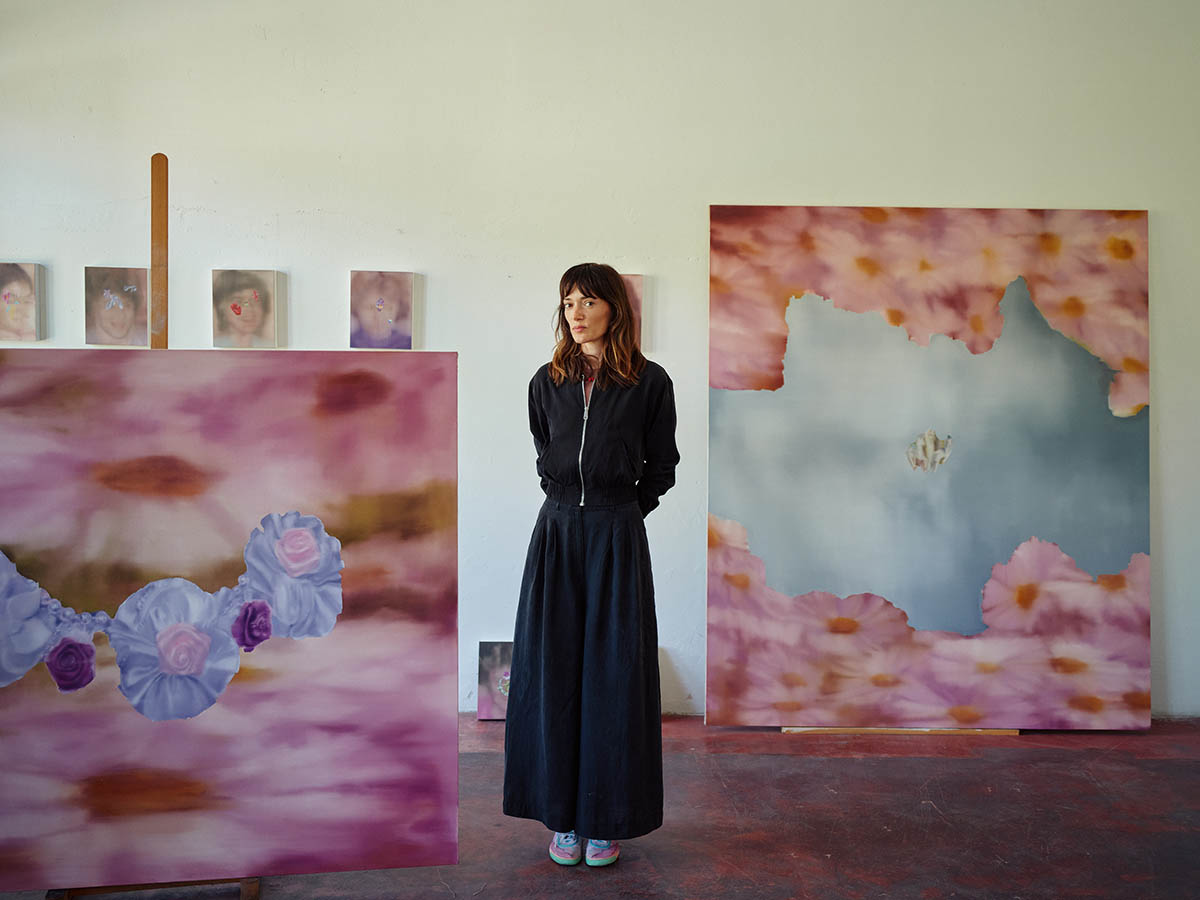
A long art career requires a lot of discipline. How have you managed this over the years?
I feel it’s important to distinguish between the public life of an artist, the professional side with exhibitions, media, and galleries, and the private life, which is full of struggle and ups and downs. Being an artist is often a solitary path; it can be lonely because of so many hours and days spent in the studio alone.
I think discipline is key: going to the studio regularly, even if the stuff in life doesn’t look that great at times, even when you don’t know what you’re doing. I think you keep digging and searching. Eventually, something good will come out of it.
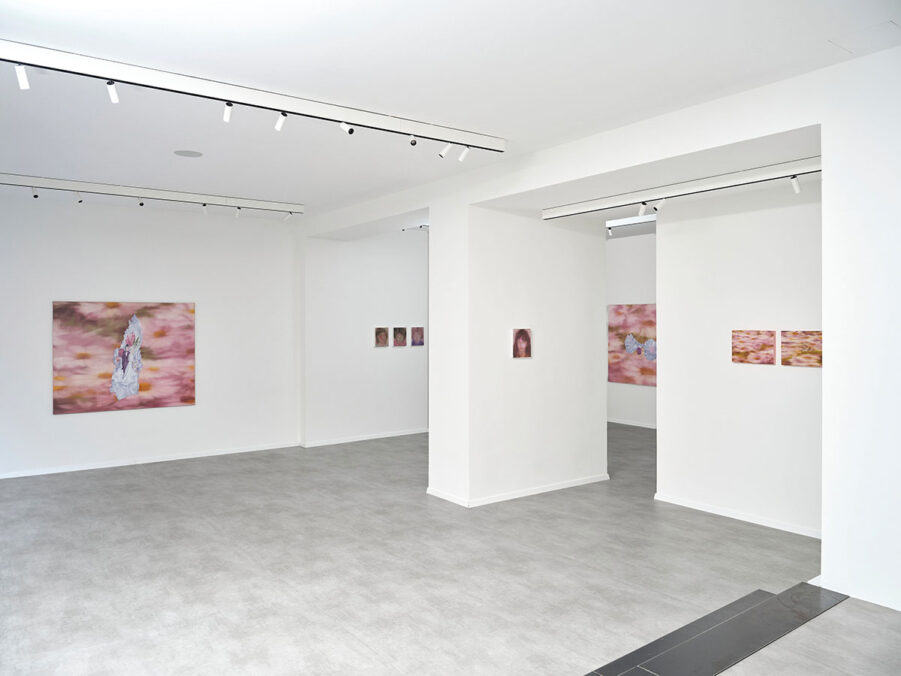
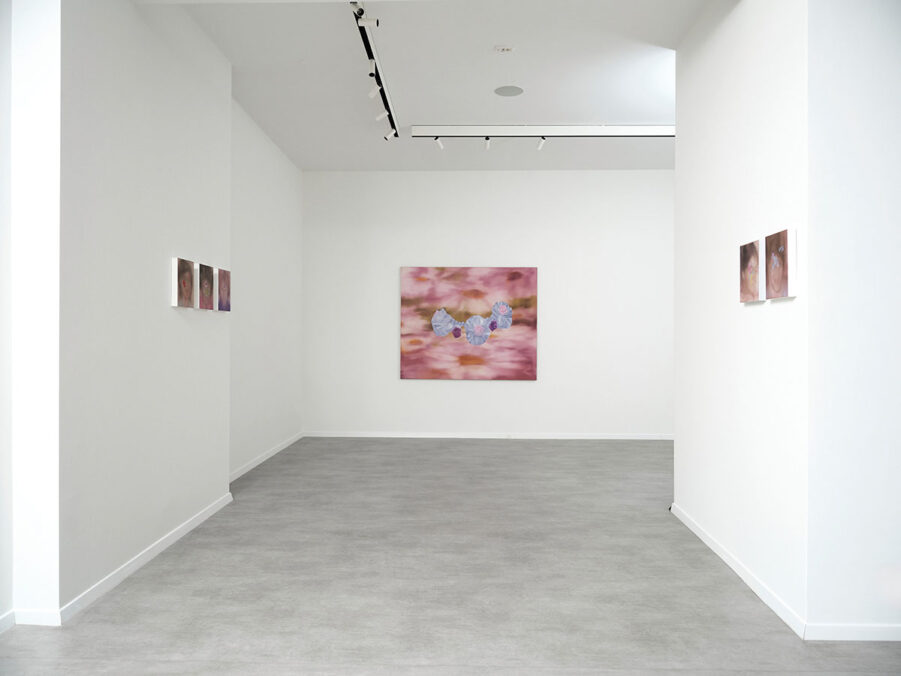
Can you tell us about the title of your solo exhibition at TROTOAR Gallery in Zagreb?
The exhibition is titled ‘Saccharine Idyll.’ The title was actually coined by Martina Rodrigues, who wrote the exhibition text. Normally, I create my own titles, but in collaboration with writers or curators, I like to leave space for their input and ideas. I’m always curious to see how someone else interprets or frames my work, and this is how it came to the title.
“Saharin” literally translates from Croatian to artificial sweetener. Not really sugar, but something sweet. Broadly, it suggests something fake, in this case, a fake ideal.
Title reflects the dualism and ambiguity present in my paintings, this tension between reality and simulation, nostalgia and artifice.
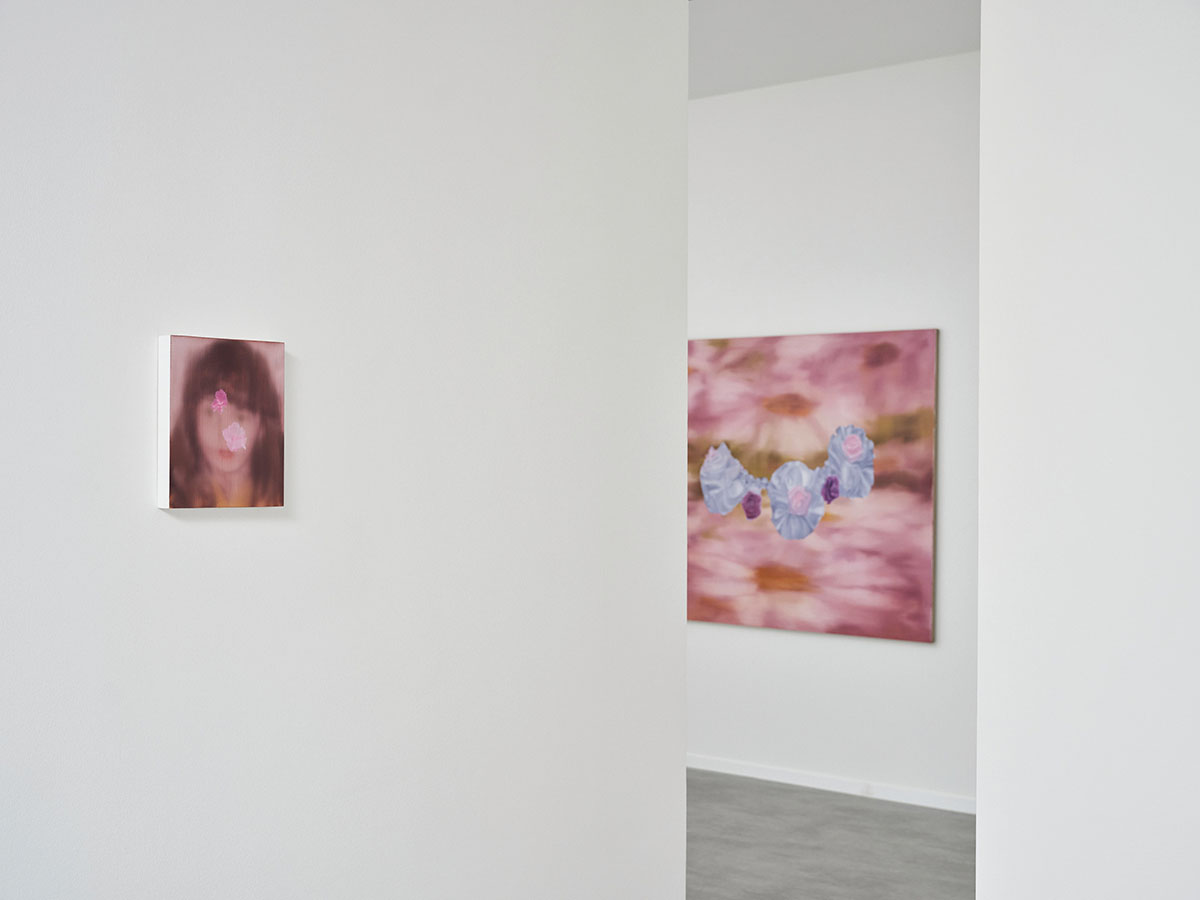
Titles of your paintings are exciting too—they often seem ironic or dualistic.
Yes, my latest titles are more personal. They can be ironic, overly romantic, or a commentary on life and popular culture. I see titles as an extension of the work itself, a way to add narrative or complexity. But ultimately, I have no control over how viewers interpret them.
That makes a lot of sense, especially when I look at your earlier works, like the hyper-realistic paintings of candies, toys, and everyday objects.
I was very interested in objects from my formative years, roughly between the 1980s in Yugoslavia and till the 2000s; this period also coincides with the political transition in the Balkans. I used those objects to explore both personal and collective memory. It was about nostalgia, but also about examining the everyday objects that shaped our perception of that time. This kept me really inspired for a long time.
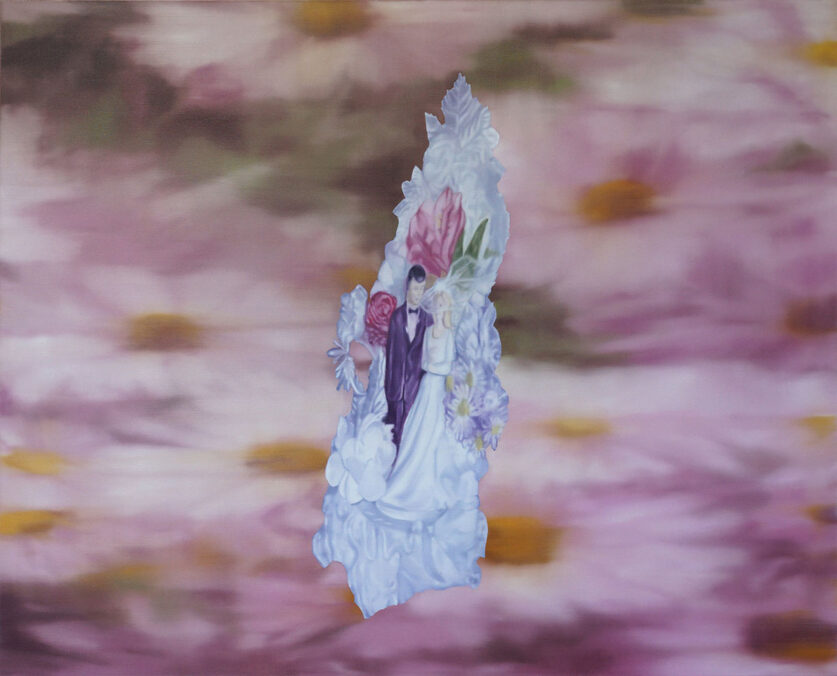
Your early work was very figurative and held easily recognizable motives.
In earlier cycles, the motifs were direct quotes from archival and historical materials, with minimal reinterpretation, as I intended to relocate forgotten fragments into the present context through the lens of painting. It was a faithful translation, allowing their inherent complexity (often socio-political) to reveal itself without additions..
How did your connection with TROTOAR Gallery develop?
I knew the team from my early days in the art scene, but we connected professionally only after I emerged from university. So our recent collaboration felt like a natural step.
I’ve also been fortunate to work with Fragment Gallery in New York, where I’ve collaborated for the past six years. In my experience, the strongest gallery relationships unfold gradually, nurtured by time and mutual respect; rushing the process just doesn’t work for me.
Now your works feel more atmospheric. How did that transition happen?
It was gradual. At first, I was obsessed with quoting exact items or events from history—factory images, historical events, video stills. But I realized that strictly copying reality limited me. I wanted more freedom to experiment conceptually within the medium.
I was influenced by German capitalistic realism, especially artists like Gerhard Richter, who moved between styles and media freely. Over the last five to six years, I’ve focused more on introspection and the process of painting itself, finding a balance between figurative precision and personal, atmospheric abstraction.
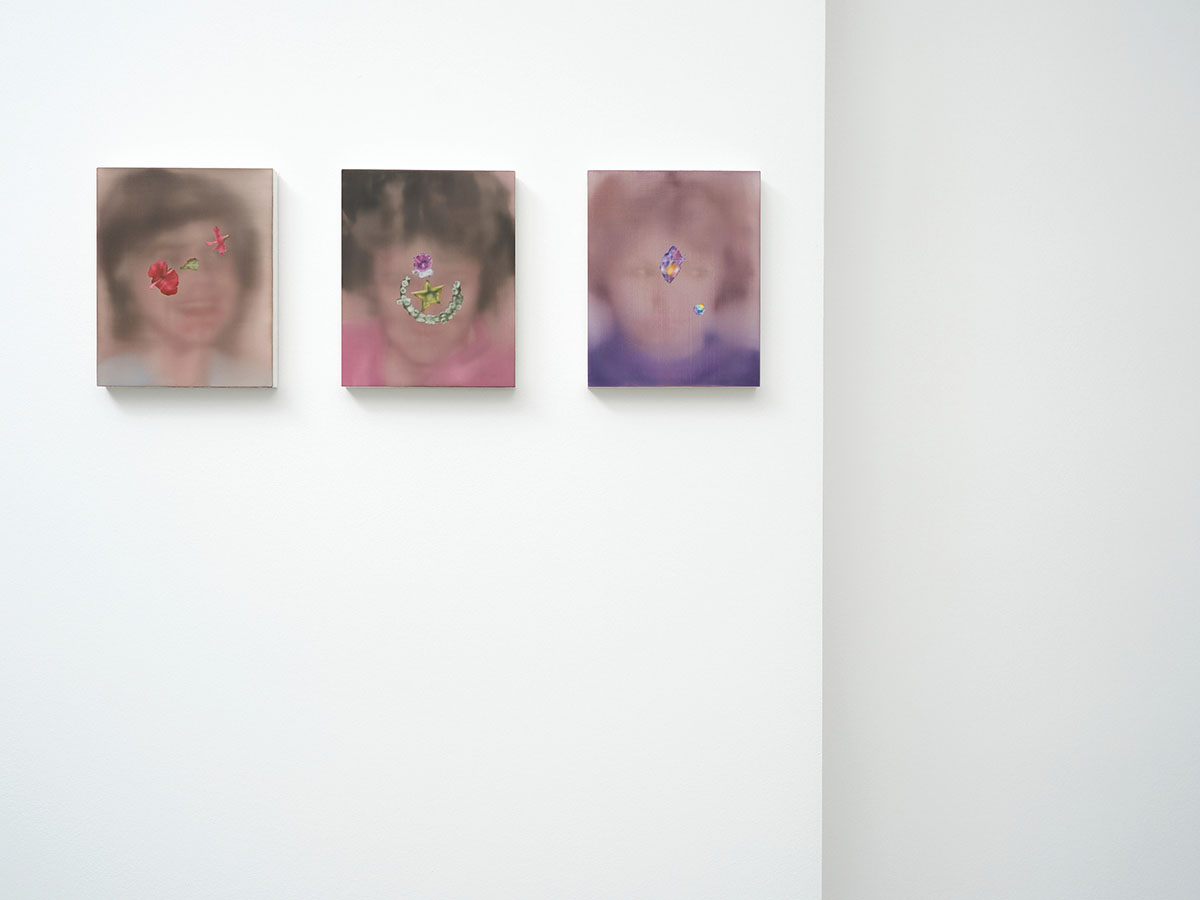
How did you discover your motives, and how do you transfer them into your work?
Mostly through fascination with my surroundings, searching through old photographs, videos, and magazines. I am in a constant search for visuals that captivate me on a personal level.
My influences came from a mix of personal memory, collective memory, and found objects..
So, in the past, you focused on quoting objects and events. Now you manipulate them, creating alternate readings and exploring memory.
Exactly. I’m interested in retrieving memories, which are inherently unstable. That instability allows me to mix real and uncanny, dreamlike narratives. Even banal objects can become carriers of complex, personal, and collective memory.
How do you feel about looking up to other artists‘ works; does this help you or?
Fascination is fine, but I believe it’s important to embrace what you can do and develop it fully.
Flowers or flower petals are often in your paintings, but they are not referencing nature, but again something unnatural, am I right?
Yes, they’re made from plastic, fabric, or other unconventional materials. Many are inspired by kitschy folklore elements popular in the 1980s and 1990s in Croatia, often used in clothing or wedding decorations. I enjoy playing with these feminine symbols; they fascinated me growing up, but they were also overwhelming, even kitschy.
My work tries to balance irony with nostalgia.
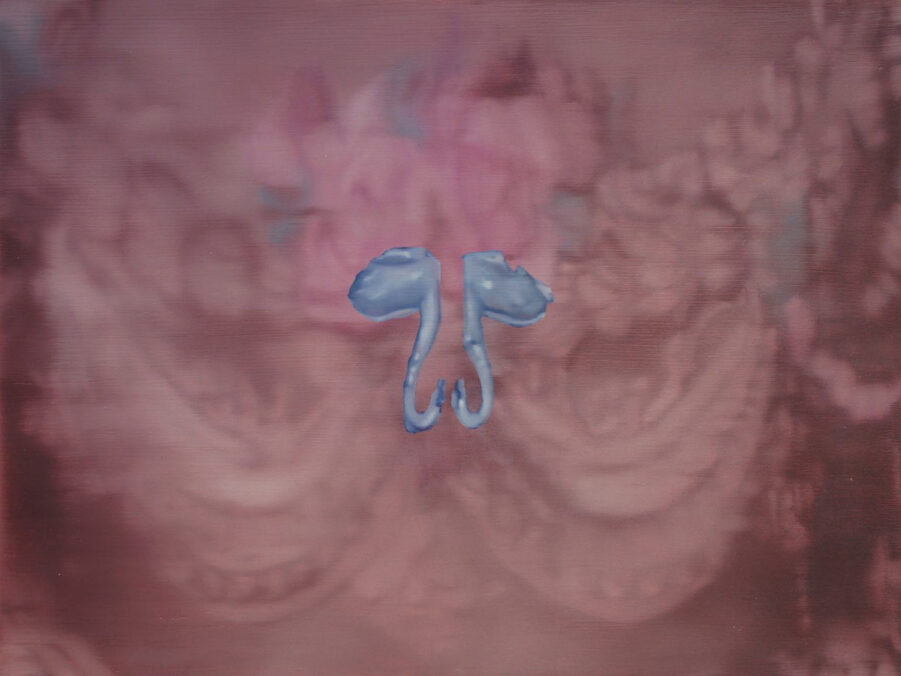
Can you elaborate on your work titled ‚Reversed‘?
‚Reversed‘ uses swans from wedding decorations, reversed upside down, forming a heart shape. It is a detail from memory and my ironic take on romantic love, the way these symbols promise something ideal that reality often doesn’t deliver.
Was it hard for you to find a studio space in Zagreb? What does the process of painting look like for you?
I began in my garage, then shared a studio with my partner. For the last six years, I’ve had my own studio in an old factory in Zagreb. It’s large by my standards, but never ideal—cold in winter, mosquitoes in summer. Finding the right space is always a struggle.
My process is mostly “wet-on-wet,” many layers, and in one take. Large canvases must be done in one session. Smaller canvases allow me to work on more than one simultaneously. But the preparation is crucial; I often spend months thinking about a painting before I even touch the canvas. The actual painting is only a fraction of the time spent; the mental preparation dominates my process.
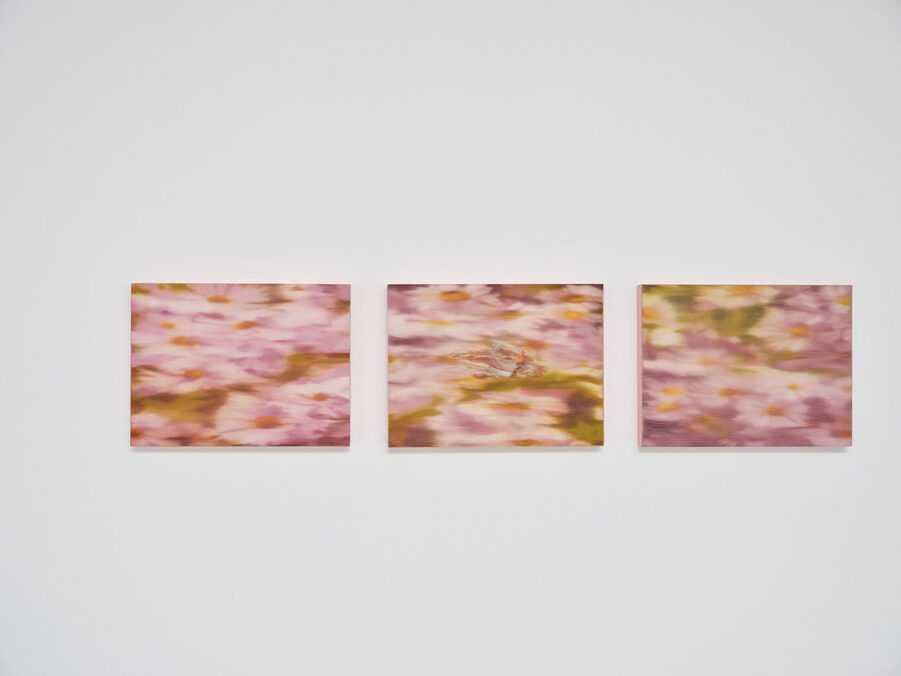
What do you think? Has social media affected artistic presentation more broadly, and what role did it play for you?
It’s a phenomenon of our time. Screens create an unrealistic view of artworks. Paintings, for instance, are never the same online as in real life. Social media has amplified visibility, but it can’t replace physical experience or engagement with collectors, galleries, and publications. Social media allowed me visibility and connection with international collaborators. But it didn’t affect my artistic practice. Art needs to be experienced in real life. Nowadays, I mostly use Instagram as a portfolio; its role as a discovery platform has declined.
Solo exhibitions: Martina Grlić – Saccharine Idyll
Exhibition duration: September 26– November 8, 2025
Address and contact:
TROTOAR Gallery
Mesnička 7, Zagreb, Croatia
www.trotoar-galerija.hr
Martina Grlić – www.martinagrlic.com, www.instagram.com/martina_grlic
Martina Grlić (b. 1982, Zagreb) is a Croatian artist whose practice centers on figurative painting and the narrative potential of the image. Her work explores the introspective layers of memory and socio-historical legacies, engaging with the politics of remembrance, modes of image interpretation, and gender aspects. Through ethnographic and autoethnographic approaches, she reimagines everyday objects tied to female experience, transforming them into compelling visual compositions. Grlić’s paintings explore identity in post-socialist contexts, merging clear memories with surreal elements to prompt reflection on personal and cultural histories.
Grlić graduated with an MFA from the Academy of Fine Arts, Zagreb, Croatia. She has exhibited at the Museum of Contemporary Art, Zagreb; Kunstlerhaus, Vienna; Ningbo Museum of Art, Ningbo, China; and the National Museum, Gdansk, Poland. Among her solo exhibitions are Memory Projects (Fragment Gallery, New York, 2024), Mindscapes (Galerija Bačva, HDLU, Zagreb, 2022; Kibla, Maribor, 2023), Hypermnesia (Lauba, Zagreb, 2021; Fragment Gallery, Moscow, 2021), Distinct Realities (Potemka Galerie, Leipzig, 2019)…)Her works are included in the collections of the Museum of Modern and Contemporary Art in Zagreb, Erste Bank, and the Zuzāns Collection in Riga. She lives and works in Zagreb, Croatia.




